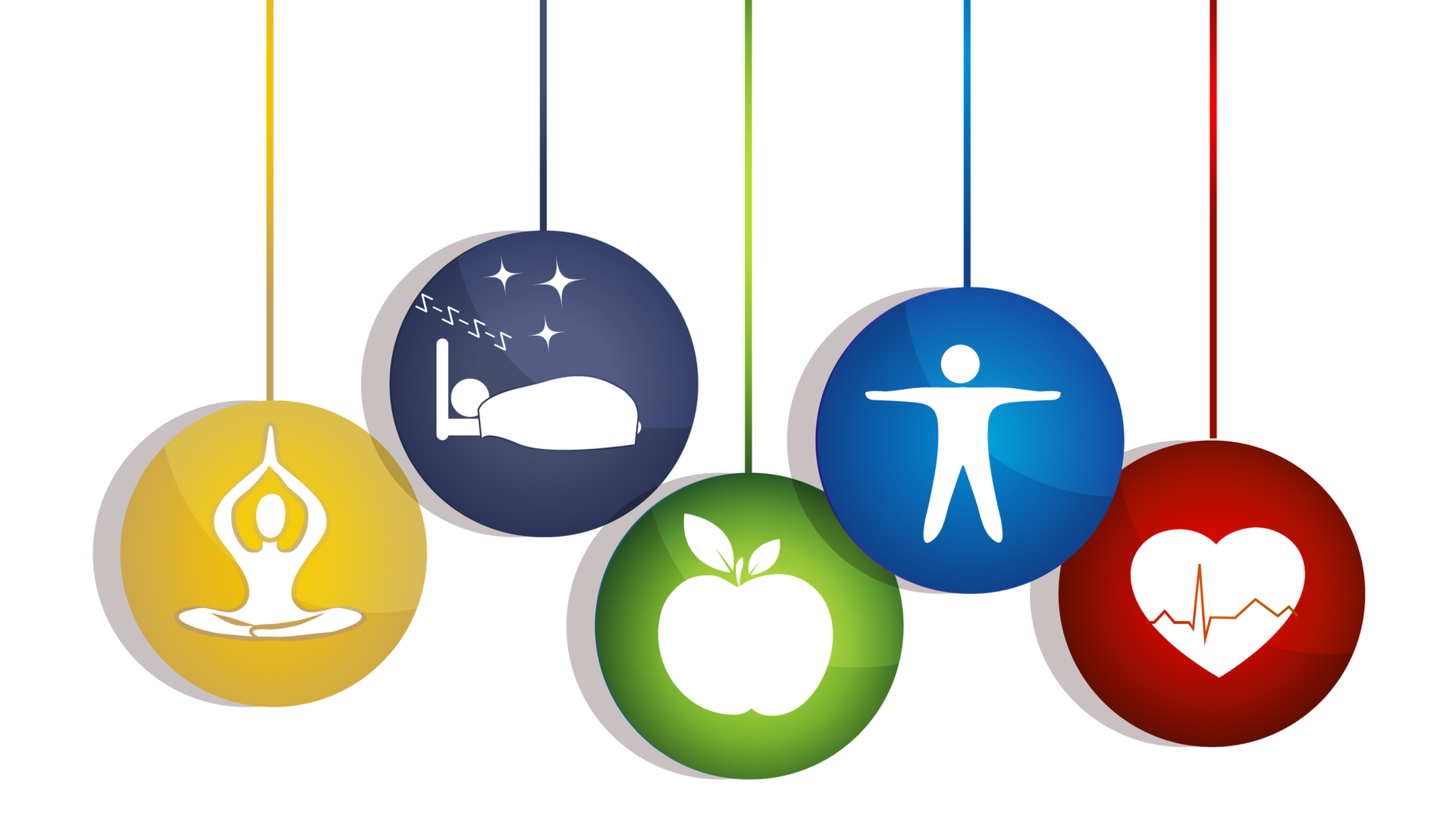Health Tips
Healthy Eating Tips
Healthy eating emphasizes fruits, vegetables, whole grains, dairy, and protein. Dairy recommendations include low-fat or fat-free milk, lactose-free milk, and fortified soy beverages. Other plant-based beverages do not have the same nutritional properties as animal’s milk and soy beverages. Protein recommendations include seafood, lean meats and poultry, eggs, legumes (beans, peas, and lentils), soy products, nuts, and seeds.
Most people in the United States need to adjust their eating patterns to increase their intake of dietary fiber, calcium, vitamin D, and potassium, according
Bump Up Fiber
To bump up fiber, try this:
- Slice up raw vegetables to use as quick snacks. Storing celery and carrots in water in the refrigerator will keep them crisp longer.
- Start your day off with a whole grain cereal like oatmeal or food made with bulgur or teff. For even more fiber, top your cereal with berries, pumpkin seeds, or almonds.
- Add half a cup of beans or lentils to your salad to add fiber, texture, and flavor.
- Enjoy whole fruit—maybe a pear, apple, melon slice or passion fruit—with a meal or as dessert.
Increase Calcium and Vitamin D
Calcium and vitamin D work together to promote optimal bone health. Our bodies can make vitamin D from sunshine, but some individuals may have difficulty producing enough vitamin D, and too much sun exposure can increase the risk of skin cancer. While very few foods naturally contain vitamin D, several foods and beverages are fortified with this essential nutrient. See food sources of calcium and vitamin D.
To increase calcium and vitamin D intake, try this:
- Drink a fortified dairy beverage with your meals.
- When you pack your lunch, include a packet of salmon or can of sardines once a week. Salmon and sardines with bones has more calcium than salmon and sardines without bones.
- Include spinach, collard greens, bok choy, mushrooms, and taro root in your vegetable dishes.
- Look for foods that are fortified with calcium and vitamin D. Soy beverages, soy yogurt, orange juice, and some whole-grain cereals may have these added nutrients. Just be sure they do not include added sugars!
- Add More Potassium
Potassium helps the kidneys, heart, muscles and, nerves function properly. Not getting enough potassium can increase blood pressure, deplete calcium in bones, and increase the risk of kidney stones.
People with chronic kidney disease and people taking certain medications may have too much potassium in their blood. But most people in the United States need more potassium in their eating patterns. See food sources of potassium.
To add more potassium, try this:
- Try new recipes that use beet greens, lima beans, or Swiss chard.
- Put some variety in your beverages with one cup of 100% prune juice or 100% pomegranate juice.
- Have a banana as a snack.
- Enjoy 100% orange juice or a recommended dairy product with your meals.
Limit Added Sugars
Too much added sugar in your diet can contribute to weight gain, obesity, type 2 diabetes, and heart disease. Some foods such as fruit and milk contain natural sugars. Added sugars are sugars and syrups that are added to foods and drinks when they are processed or prepared. Added sugars have many different names, such as cane juice, corn syrup, dextrose, and fructose. Table sugar, maple syrup, and honey are also considered added sugars. Sugary drinks are a common source of added sugars [PDF-30.6MB].
To limit added sugars, try this:
- Drink water instead of sugary drinks. Add berries or slices of lime, lemon, or cucumber for more flavor.
- Add fruit to your cereal or yogurt for sweetness.
- Don’t stock up on sugary drinks and snacks. Instead, drink water and keep fruit and vegetable slices handy for snacks.
- At coffee shops, skip the flavored syrups and whipped cream. Ask for low-fat or fat-free milk or an unsweetened, fortified soy beverage. Or get back to basics with black coffee.
- Read nutrition labels and choose foods with no or lower amounts of added sugars.
Replace Saturated Fats
Replacing saturated fat with healthier unsaturated fats can help protect your heart. Common sources of saturated fat [PDF-1.13MB] are fatty meats such as beef ribs and sausage, whole milk, full-fat cheese, butter, and cream cheese.
We need some dietary fat to give us energy, help us develop healthy cells, and help us absorb some vitamins and minerals. But unsaturated fat is better for us than saturated fat. See common sources of saturated and unsaturated fat [PDF-1.13MB].
To replace saturated fats with unsaturated fats, try this:
- Replace whole milk in a smoothie with low-fat yogurt and an avocado.
- Sprinkle nuts or seeds on salads instead of cheese.
- Use beans or seafood instead of meats as a source of protein.
- Cook with canola, corn, olive, peanut, safflower, soybean, or sunflower oil instead of butter or margarine.
- Replace full-fat milk and cheese with low-fat or fat-free versions.
Cut Back on Sodium
Eating too much sodium can raise your risk of high blood pressure, heart attack, and stroke. More than 70% of the sodium Americans consume comes from packaged and prepared foods. While sodium has many forms, 90% of the sodium we consume is from salt. See the top sources of sodium [PDF-226KB].
To cut back on sodium, try this:
- Instead of using salt, add flavor to your meals with a squeeze of lemon juice, a dash of no-salt spice blends, or fresh herbs.
- Eat high-sodium processed and prepackaged food less frequently. Many common foods, including breads, pizza, and deli meats, have high amounts of sodium.
- At the grocery store, read the Nutrition Facts label to find low-sodium products.
- Buy unprocessed food, such as fresh or frozen vegetables, to prepare at home without salt.
Aim for a Variety of Colors
A good practice is to aim for a variety of colors on your plate. Fruits and vegetables like dark, leafy greens, oranges, and tomatoes—even fresh herbs—are loaded with vitamins, fiber, and minerals.
Try this:
- Sprinkle fresh herbs over a salad or whole wheat pasta.
- Make a red sauce with fresh tomatoes (or canned tomatoes with low sodium or no salt added), fresh herbs, and spices.
- Add diced veggies—like peppers, broccoli, or onions—to stews and omelets to give them a boost of color and nutrients.
- Top low-fat, unsweetened yogurt with your favorite fruit.
How to Reduce Sodium Intake
Start
Tips for Reducing Sodium Intake
Start
At the Grocery Store
- Buy fresh, frozen, or canned vegetables with no salt or sauce added.
- Choose packaged foods labeled “low sodium,” “reduced sodium,” or “no salt added” when available.
- Compare the amount of sodium in different products by reading Nutrition Facts labels. Choose the options with the lowest amounts of sodium.
- When buying prepared meals, look for those with less than 600 milligrams (mg) of sodium per meal, which is the upper limit set by the Food and Drug Administration for a meal or main dish to be labeled “healthy.”
- Check the amount of sodium per serving, and don’t forget to check the number of servings per container.
- When possible, purchase fresh poultry, fish, pork, and lean meat, rather than cured, salted, smoked, and other processed meats. For fresh items, check to see whether saline or salt solution has been added—if so, choose another brand.
- Ask your grocer if they have a low sodium shopping list available.
- Ask to speak to the registered dietitian at your local grocery store to learn more about buying low sodium products. If your grocer doesn’t have a registered dietitian, ask your doctor for a referral. A registered dietitian can provide valuable guidance on reducing your family’s sodium intake and managing blood pressure


Comments
Post a Comment